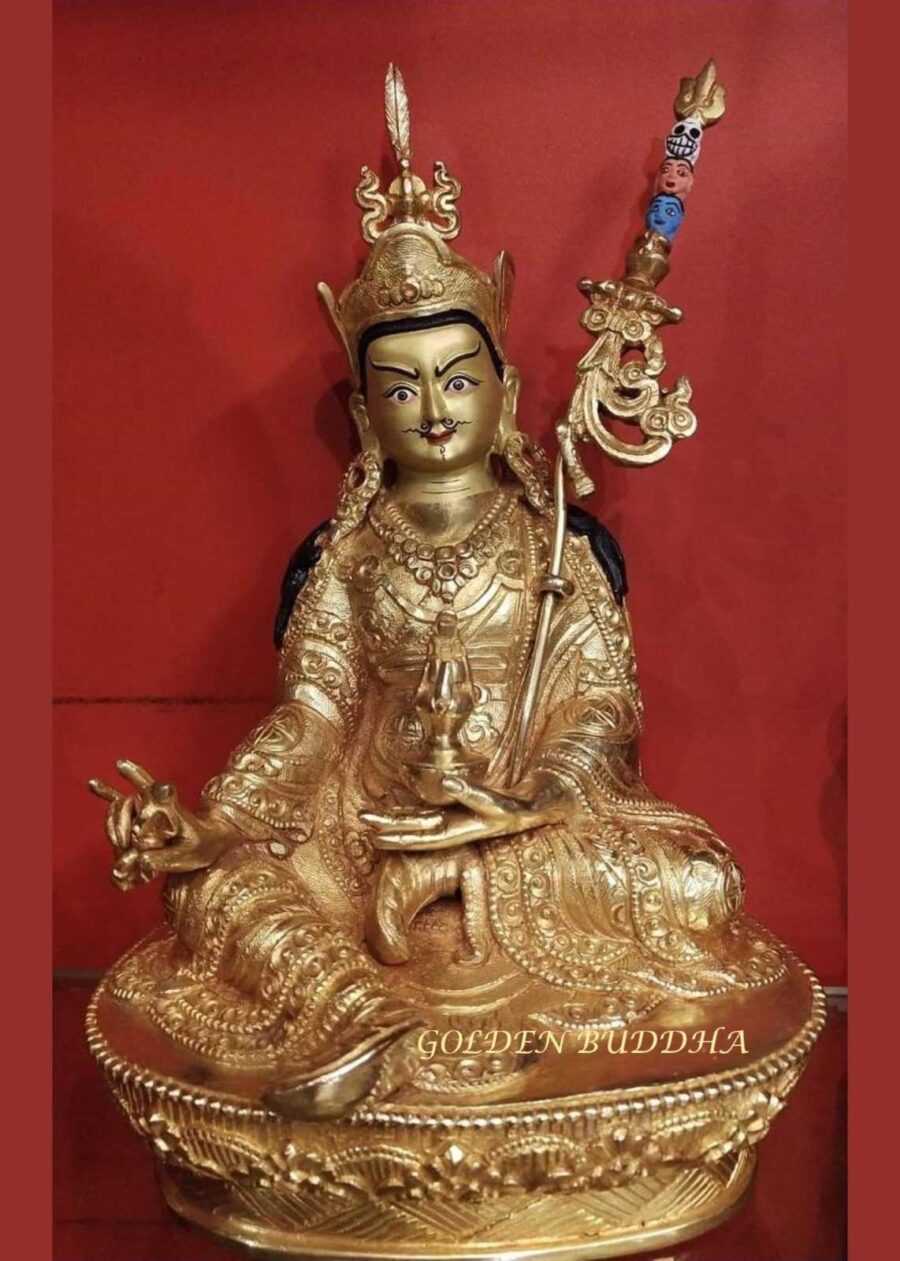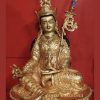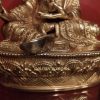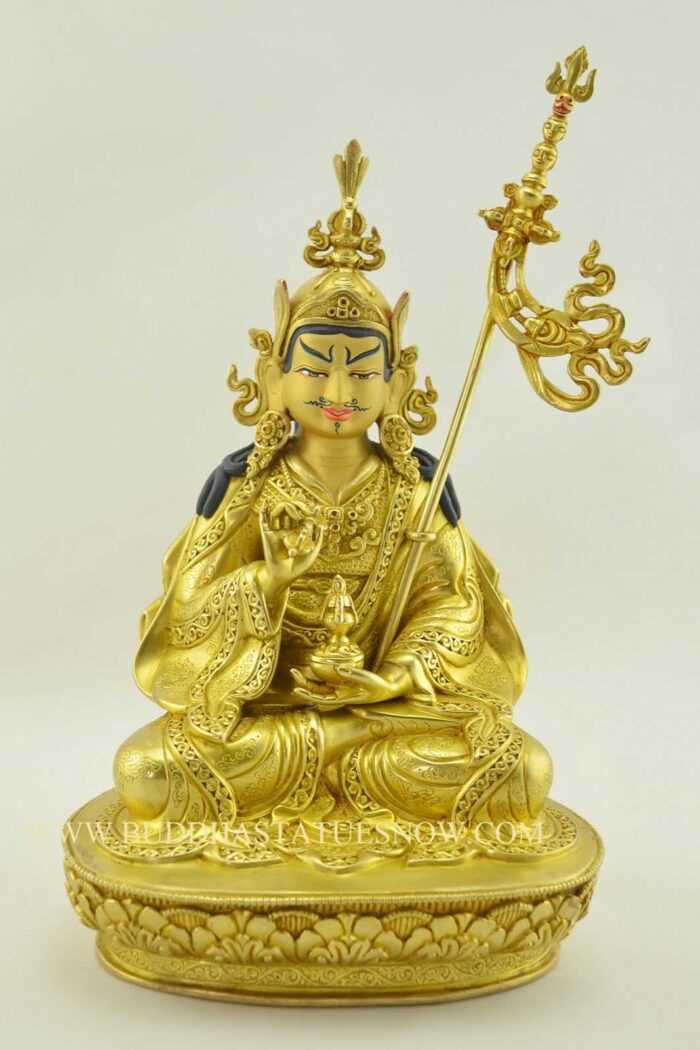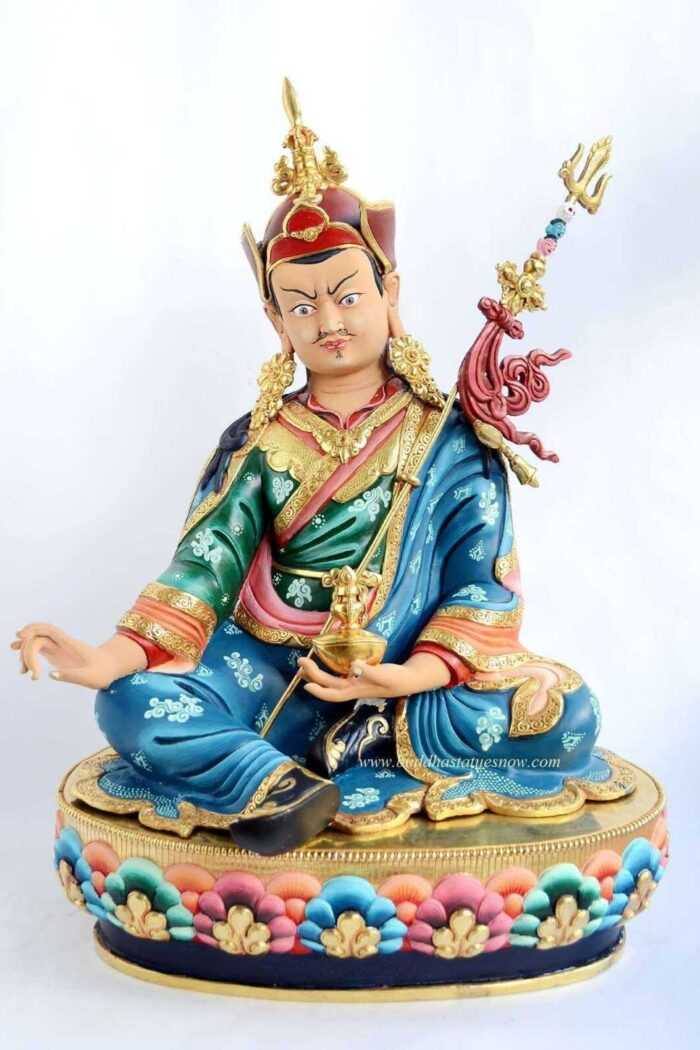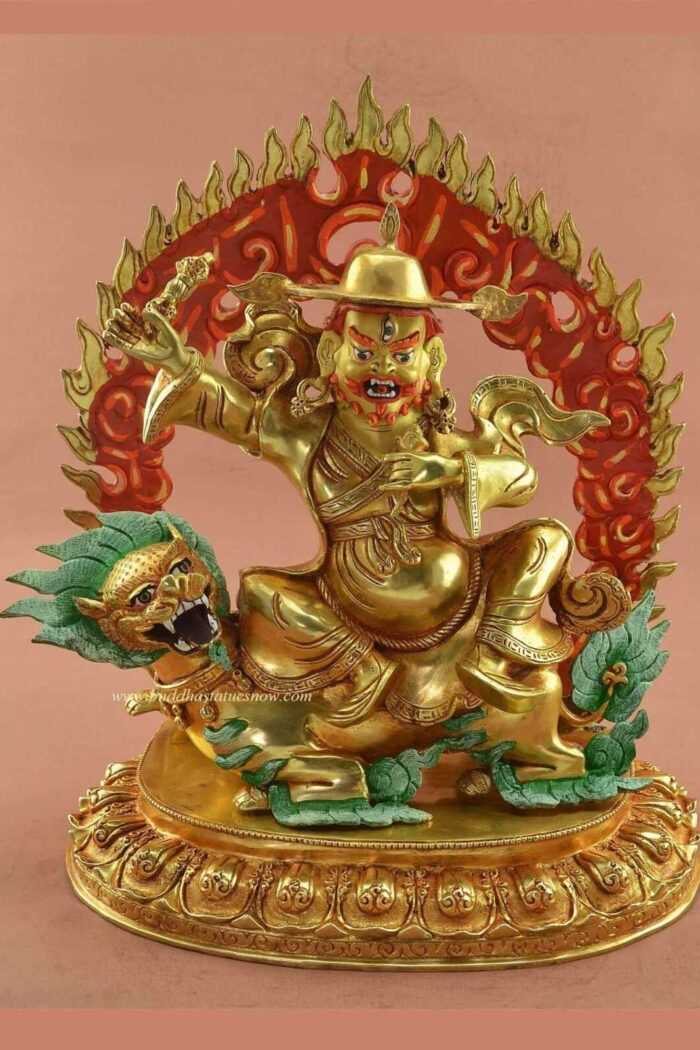A Guru Rinpoche sculpture is an iconic figure in Tibetan Buddhism. As a result, he is commonly featured in Nepali sculpture and thangkas. Guru Rinpoche is also known as Padmasambhava and he is believed to be of divine origin. Indeed, Padmasambhava is Sanskrit for “lotus born” and he comes from a mythical land called Oddiyana.
As a result of his reputation for being in possession of the spiritual powers of persuasion, he was summoned to Tibet by Santaraksita in the 8th century. After his arrival he was instrumental in the completion of Tibet’s first Buddhist monastery in Samye. Additionally, Guru Rinpoche foresaw the rise of a future Tibetan king who would become an adversary of Buddhism. Therefore, he wrote down the Tantric teachings in the secret language of the dakinis and stashed it away in secret locations. After the demise of the adversarial Tibetan king, the teachings were rediscovered and Tibetan Buddhism was reestablished.
Guru Rinpoche Sculpture Features
This Guru Rinpoche sculpture depicts him holding the khatvanga. The khatvanga is a mystical weapon and on the tip the three skulls representing the three worlds (Trailokya) are impaled. These three skulls represent the three realms of desire, form and formlessness from which Guru Rinpoche has transcended. Additionally, in his right hand he holds the vajra which is a symbol for “diamond or thunderbolt”. It is also symbolically a representation of the masculine attribute of compassion and skillful means.
On the tip of his hat is a vulture feather which symbolizes his realization of the highest view. Furthermore, his left hand is in Dhyana mudra and in the palm is the kapala “skull cup” with the vase of immortality inside.


